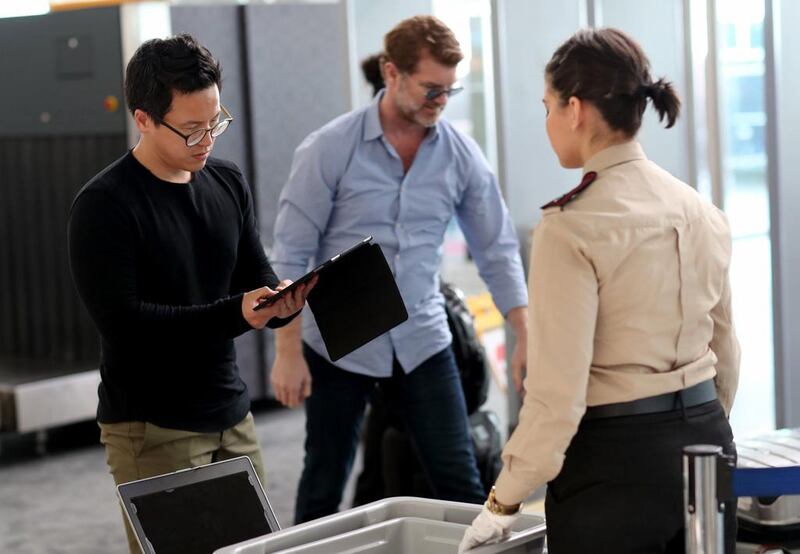Any extension of a US ban on electronic devices to include US-bound flights from Europe will have a greater impact on European and American carriers than their Middle Eastern rivals suffering from the current restrictions, according to experts.
In March the US slapped a ban on large personal electronic devices in carry-on luggage from 10 airports in Middle East and North Africa, prompting airlines such as Emirates to slash flights to North America. The restrictions are in place until October 14.
Last month, the US authorities said the ban could be extended to flights from Europe.
“If this ban is extended on transatlantic flights, then it is likely that many EU and US airlines will see a huge drop in demand – far greater than what the likes of Emirates and others have experienced,” said Saj Ahmad, the chief analyst at London-based StrategicAero Research.
Emirates cut the number of flights to the US to 101 from 126 a week from May.
“If the ban were extended to Europe-to-US flights, for example, we estimate a US$1.4 billion hit on productivity,” Alexandre de Juniac, director general and chief executive of trade body International Air Transport Association said in a statement on Thursday.
“An Iata-commissioned survey of business travellers indicated that 15 per cent would seek to reduce their travel in the face of a ban.” The US electronics ban and a proposed travel ban from six countries in the Middle East have taken their toll on passenger numbers for US-Middle East routes, according to Iata figures.
Revenue passenger kilometres, a measure of actual passenger traffic, for flights from the Middle East to the US declined in March 2.8 per cent year-on-year, the first annual fall in at least seven years, according to Iata.
The growth rate for Middle East airlines in April was slower than the five-year average growth pace, according to Iata.
Middle Eastern carriers posted a 10.8 per cent growth year-on-year in traffic as capacity rose 8.9 per cent and load factor climbed 1.3 percentage points during the same period to 76.5 per cent, according to Iata.
Globally, the European carriers led the market in traffic, growing at a rate of 14 per cent year-on-year in April.
Capacity on European carriers grew 7.9 per cent over the period and load factor rose 4.9 percentage points to 85.4 per cent.
Terror attacks in European cities have been one factor to hit demand and this is expected to dent travel plans further. Emirates cited terrorism as one reason for lower demand and a 82.5 per cent year-on-year plunge in profit in its last financial year that ended in March.
“[Saturday] night’s terror attack [in London] will probably give some travellers a moment to pause and think about whether their travel is essential or not,” said Mr Ahmad.
ssahoo@thenational.ae
Follow The National's Business section on Twitter





